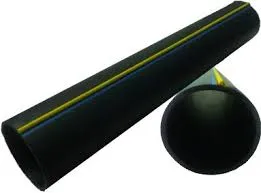Dec . 09, 2024 18:05 Back to list
Understanding HDPE Pipes and Fittings for Optimal Performance and Durability in Applications
Understanding HDPE Pipes and Fittings The Future of Plumbing Infrastructure
In the ever-evolving world of construction and plumbing, the materials we choose play a pivotal role in determining the quality and longevity of the infrastructure we develop. One of the most significant innovations in this field has been the introduction of High-Density Polyethylene (HDPE) pipes and fittings. Known for their superior properties, HDPE pipes are becoming increasingly popular for a variety of applications, from municipal water systems to industrial drainage.
What is HDPE?
High-Density Polyethylene (HDPE) is a thermoplastic made from petroleum. It is characterized by its high strength-to-density ratio, which makes it lightweight yet robust. The material is resistant to a wide range of chemicals and does not corrode, making it ideal for use in diverse environments. HDPE is also known for its flexibility, which allows it to be used in a variety of configurations.
The Advantages of HDPE Pipes
1. Durability One of the most appealing features of HDPE pipes is their durability. They have a long service life—often exceeding 50 years—under optimal conditions. Their resistance to corrosion and degradation ensures that they can withstand extreme weather conditions and chemical exposure without compromising their integrity.
2. Cost-effectiveness While the initial installation costs of HDPE pipes might be higher than traditional materials like PVC or metal, the overall cost savings become apparent in the long term. Their durability reduces the need for frequent replacements and repairs, leading to significant savings in maintenance and labor costs.
3. Environmental Impact HDPE is a sustainable option, as it is fully recyclable. The production process of HDPE pipes also generates fewer pollutants compared to conventional materials. Moreover, their lightweight nature reduces transportation costs and energy consumption during shipping.
4. Flexibility and Ease of Installation The flexibility of HDPE allows for easier installation, particularly in challenging terrains. Unlike rigid piping systems, HDPE can be bent to accommodate changes in direction without the need for additional fittings, which simplifies the installation process and reduces the potential for leaks.
5. Hydraulic Efficiency HDPE pipes have a smooth inner surface that minimizes friction, resulting in less energy required to transport fluids. This hydraulic efficiency makes them an ideal choice for water supply systems and irrigation.
hdpe pipes and fittings

6. Resistance to Leaks and Bursts HDPE piping systems are fused together using a process known as butt fusion. This creates a continuous and seamless connection, significantly reducing the likelihood of leaks. Additionally, their robustness makes them resistant to bursting under pressure, which is a common failure point in traditional piping systems.
Applications of HDPE Pipes
Due to their numerous benefits, HDPE pipes are employed in various applications
- Water Supply and Distribution Municipal water systems worldwide are increasingly replacing aging metal piping with HDPE due to its durability and reliability. - Wastewater Management HDPE’s resistance to chemicals and corrosion makes it an excellent choice for sewer systems and treatment plants.
- Irrigation Systems Agriculture relies on efficient water transport systems, and HDPE pipes are invaluable for their flexibility and ease of installation in uneven terrain.
- Industrial Use Industries utilize HDPE pipes for transporting chemicals, gases, and other materials, taking advantage of their durability and resistance to various substances.
The Future of HDPE in Infrastructure
As we move towards a more sustainable future, the demand for eco-friendly and efficient materials like HDPE will only increase. The push for modernization in infrastructure, especially in developing countries, opens the door for the global adoption of HDPE pipes and fittings. Their long lifespan, environmental benefits, and efficiency make them the ideal choice for future plumbing and infrastructure projects.
In conclusion, HDPE pipes and fittings represent a significant advancement in plumbing technology. Their unparalleled advantages make them suitable for a wide array of applications, ensuring that they will play a crucial role in the development of modern infrastructure. As we strive for sustainability and efficiency, embracing materials like HDPE is not just a choice but a necessity for future growth. Investing in HDPE means investing in a reliable, durable, and environmentally friendly future.
-
HDPE Natural Sheet: Durable, Food-Grade & Versatile Plastic Solutions
NewsAug.27,2025
-
Durable Glossy PVC Rigid Sheet | Premium High-Shine Panels
NewsAug.26,2025
-
Durable PP Rigid Sheet: Lightweight, Chemical Resistant Solutions
NewsAug.21,2025
-
PVC Grey Sheet for Extraction: Chemical Resistant & Durable
NewsAug.19,2025
-
Durable PVC Pipe Fittings for Plumbing & Irrigation Needs
NewsAug.18,2025
-
HDPE Steel Belt Reinforced Spiral Corrugated Pipe | High Strength
NewsAug.17,2025

